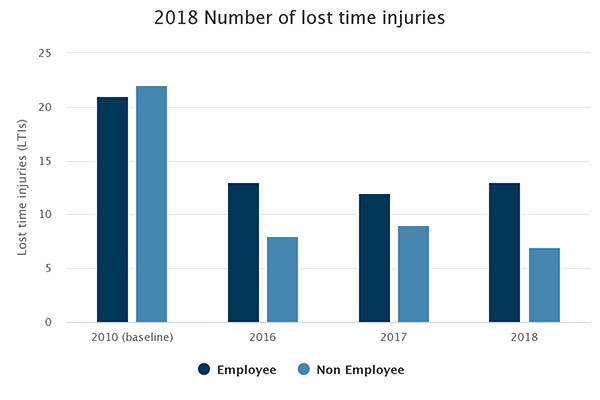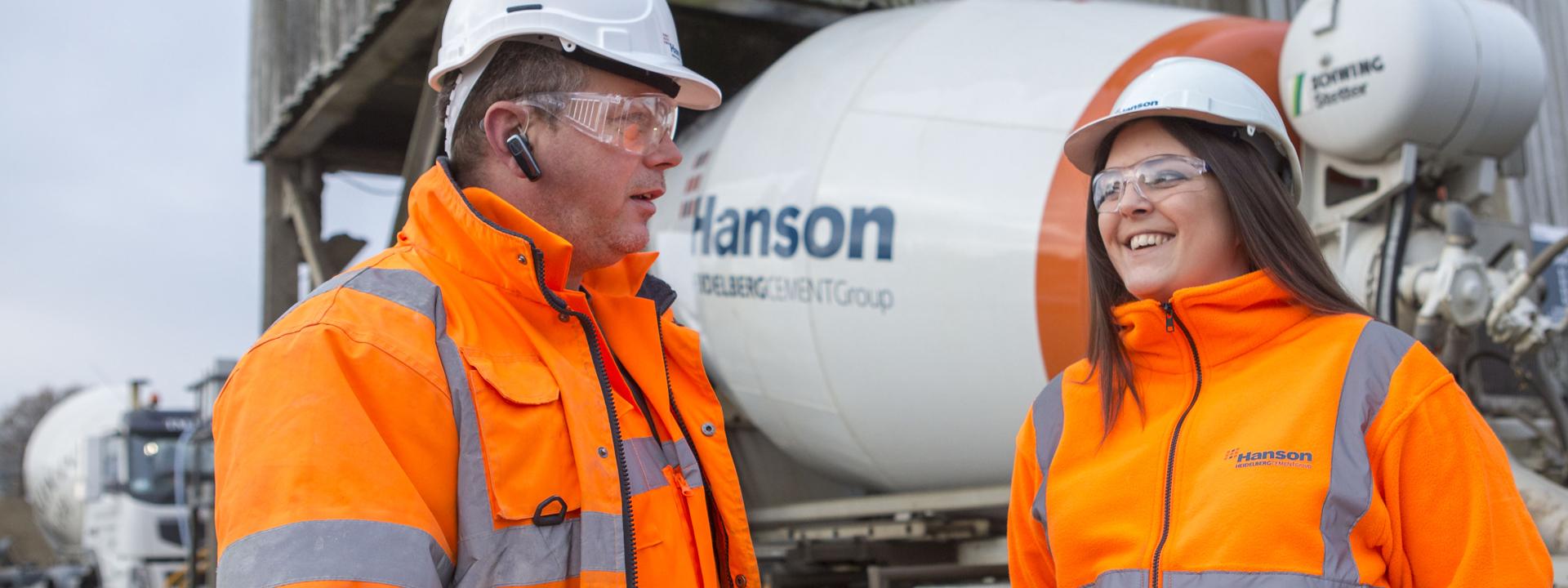Health, safety and well being
The total number of lost time injuries (LTIs) fell by one from 21 to 20, but there was an increase in employee LTIs from 12 to 13. As a result, the employee LTI frequency rate of injuries per one million hours worked, which has been adopted as a standard industry indicator, rose from 1.64 to 1.77. The employee LTI severity rate, derived from the total number of days lost, rose from 52.2 to 84.9.
A key area of focus in our quest for zero harm is distribution, where total LTIs doubled during the year from four to eight. We have stepped up training for our drivers and introduced safety awareness sessions to identify and eliminate potential risks both on our own and on customer sites.
A new initiative to improve health and wellbeing was launched in January 2018. It included quarterly themed activities to support the campaign and a partnership with the charity Mates in Mind, which aims to raise awareness, address the stigma of poor mental health and improve positive mental wellbeing in the UK construction industry.
We have been working closely with Mates in Mind to raise awareness of mental health issues as well as educating employees to recognise warning signs and offer appropriate support. The aim is to remove the stigma and encourage people to talk about problems they may be facing and work together to overcome them.
We engage with our workforce through safety conversations and encouraging near-hit reporting, along with tool box talks and best practice alerts. We also have regular one-to-one safety discussions with employees along with comprehensive health and safety training from both in-house specialists and external consultants delivered through monthly conference calls, podcasts and on-site discussions supported by our sustainability representative network.
As part of our communications programme, we are using professional actors to help to educate and inform the workforce. A team from a company called Juice Learning put on a show for over 150 contracting division employees to help communicate the importance of behavioural safety in a way that no conventional training could have done.
They acted out a series of different situations centred on challenging unsafe behaviour, looking out for each other and reporting near hits, which were then discussed by delegates. The outcomes were very impressive, with a pre and post-event evaluation survey showing an uplift of more than 20 percentage points in personal awareness about behavioural safety. The number of positive responses to the statement ‘I understand the mind-set required to create a culture of safety excellence and how I influence those around me’ rose from 71 per cent before the event to 92 per cent afterwards. Similar sessions were held later in the year for cement plant staff.
We continued with our programme of random and unannounced drugs and alcohol testing at operational sites and offices. The testing is combined with an awareness campaign to explain the impact and effects of different types of drugs and encourage employees who think they may be at risk to seek help and support.

-
Lost time injuries data
Click here for data by business line2010 (baseline)
2016
2017
2018
Employees
21
13
12
13 Contractors
22
8
9
7 Employee severity rate
44.2
50.3
52.2
84.9 Employee frequency rate
2.66
1.84
1.64
1.77

